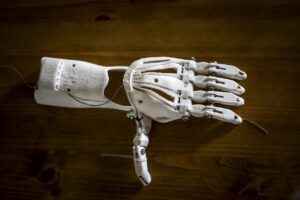If we time travel to the past and tell people that in the future we can create something out of nothing, they would probably laugh at us and call us crazy. But in essence, that is what 3D printing is. Technology has evolved so much that people were able to reinvent traditional printing.
What is 3D Printing?
Like all kinds of printing, 3D printing uses a design created on a computer on a three-dimensional program. This program is called computer-aided design (CAD). It has been used by engineers and other designers to envision what a design looks like in scale, without the hassle of making it. Now, it is also utilized for 3D printing.
You can print a design three-dimensionally with the use of a machine that feeds and uses raw materials like filaments or resin. The fabrication machine then “prints” out the design for the CAD software layer by layer, until the object is complete. This makes 3D printing different from traditional manufacturing where raw materials are either molded or carved.
How is it used?
As expected, 3D printing has been a game-changer for different industries. In manufacturing, it is used mainly to produce prototypes efficiently. Gone were the days of manual labor to create prototypes with three-dimensional printing. Instead, manufacturing companies nowadays hire CAD experts and designers to make the sample products or packaging they need.
The most obvious beneficiary of this three-dimensional method of production is the infrastructure industry. Architects, in particular, wouldn’t need to spend hours or days even to make scale models for building designs. This makes their work more efficient because clients won’t have to wait for a long time to see accurate models of how the buildings should look like. Engineers can also test road designs or bridges using small scales of their work. They can determine the integrity of infrastructures by testing 3D-printed models instead.

Most surprising of all, is the use of 3D printing in the healthcare industry. You might think, what do three-dimensionally printed things have to do with medicine, right? Well, it turns out, doctors can now print out three-dimensional prosthetics that are tailored to the patients’ measurements. This speeds up the time needed to produce prosthetics and the cost of possibly replacing them.
The Disadvantages of 3D Printing
Because it is still such a new thing, three-dimensional printing is far from perfect. There are many problems involving this method of production as well.
The most pressing concern about 3D printers is the cost. Fabrication machines like these are extremely expensive. The materials fed to the machines also don’t come cheap. They need to be up to quality to ensure the integrity of designs and compatibility with the machines.
Another issue about this type of manufacturing is copyright infringement. There have been many complaints rising about people stealing designs from the internet and printing them three-dimensionally. Legal experts are looking into how this can be prevented in the future.
3D printing is proof of how far we’ve come in terms of fabrication and manufacturing. It is an incredibly promising process that we know will improve in the near future.